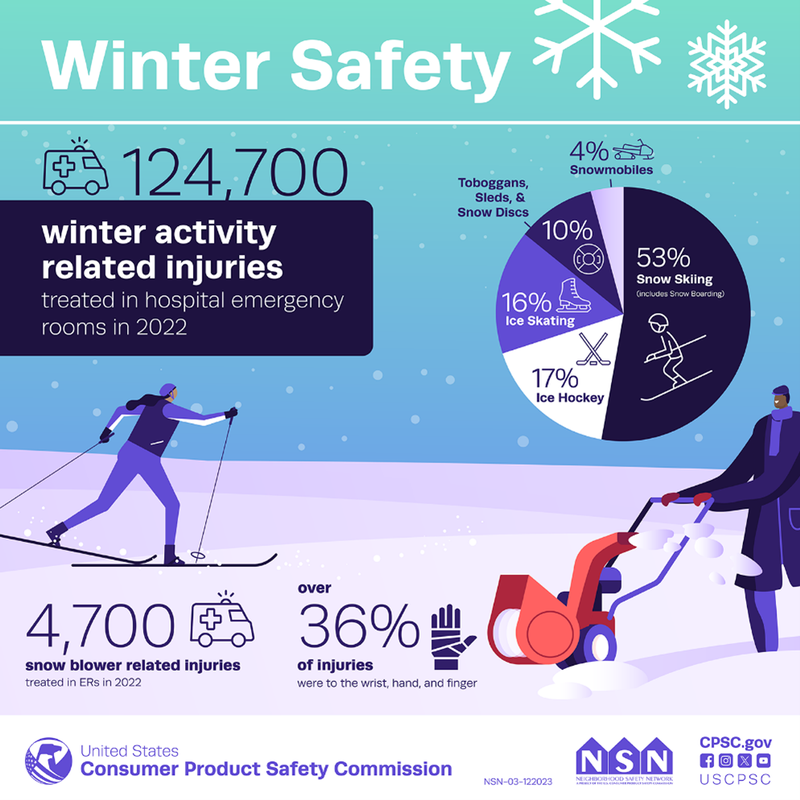|
According to the latest CPSC data, in 2022, there were an estimated 124,700 winter sports-related injuries treated in emergency rooms nationwide. Of all injuries:
- 53% occurred during snow skiing and snowboarding,
- 17% during ice hockey,
- 16% while ice skating,
- 10% while using toboggans, sleds, and snow discs,
- and 4% while using snowmobiles.

Many of these incidents can be avoided by following some practical safety tips.
Winter Sports Safety – Helmets Make a Difference
- Wear appropriate protective gear, including goggles, helmets, gloves, and padding.
- Wear a properly fitted helmet to reduce the risk of a head injury.
- Wear the right helmet for the activity. Check out our helmet safety publication Which Helmet for Which Activity for more information.
- Check that equipment is working properly prior to use.
Snow Blower – Clear Snow Safely
- Do NOT try to clear snow from the discharge chute of a snow blower with your hands – this is when most snow blower injuries happen.
- NEVER leave a gas-powered snow blower running in an enclosed area. The exhaust contains poisonous carbon monoxide, which can kill in minutes.
- To avoid fire, do not add gasoline to a running or hot engine; always keep the gasoline in a gas can or portable gasoline container with a child-resistant closure to prevent child poisonings.
Check for Recalls
- Check your home before bringing out winter-related products, check if your products were previously recalled.
- Report any unsafe products or any incidents where someone was injured by a product to CPSC at saferproducts.gov.
Read our full press release.
|


